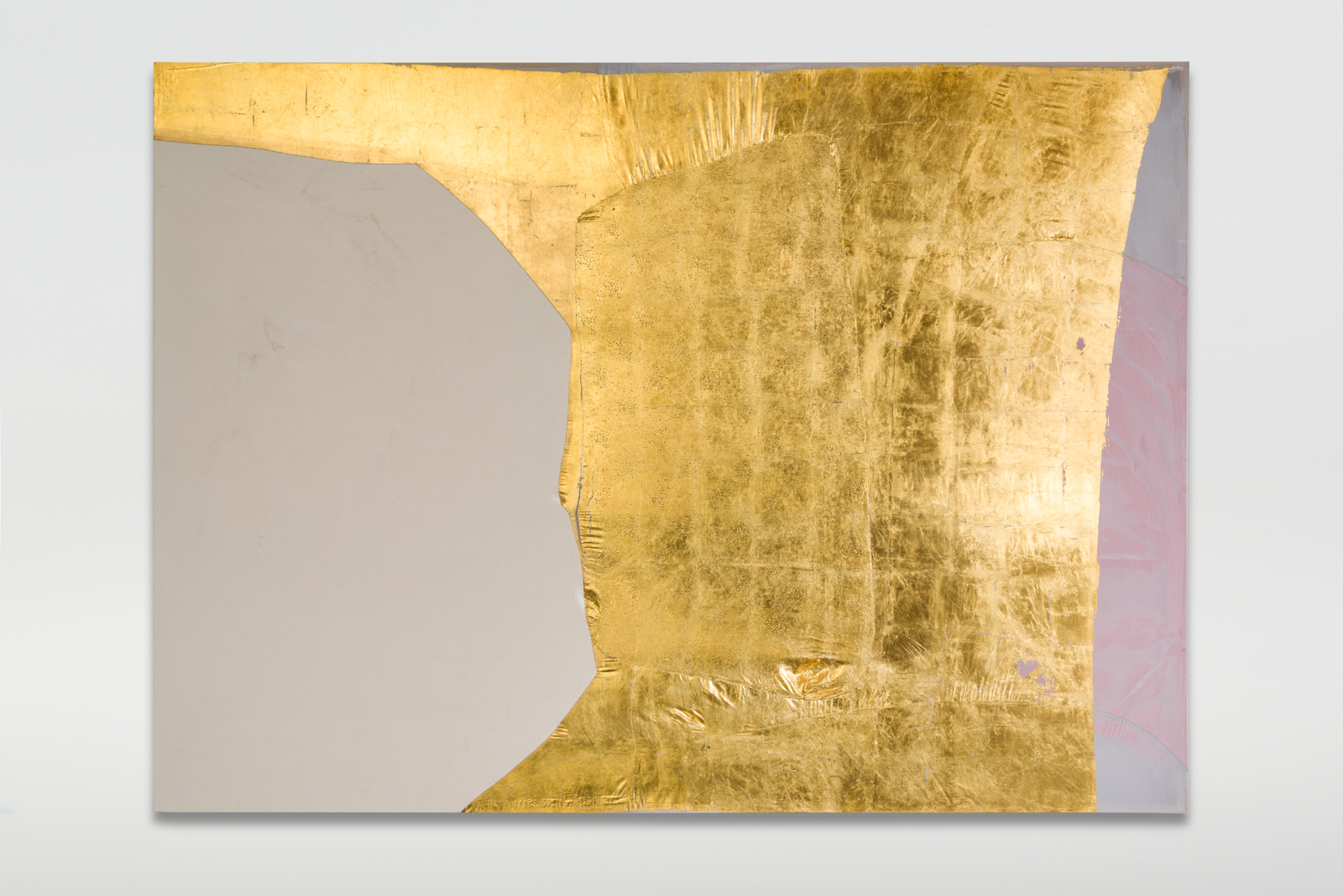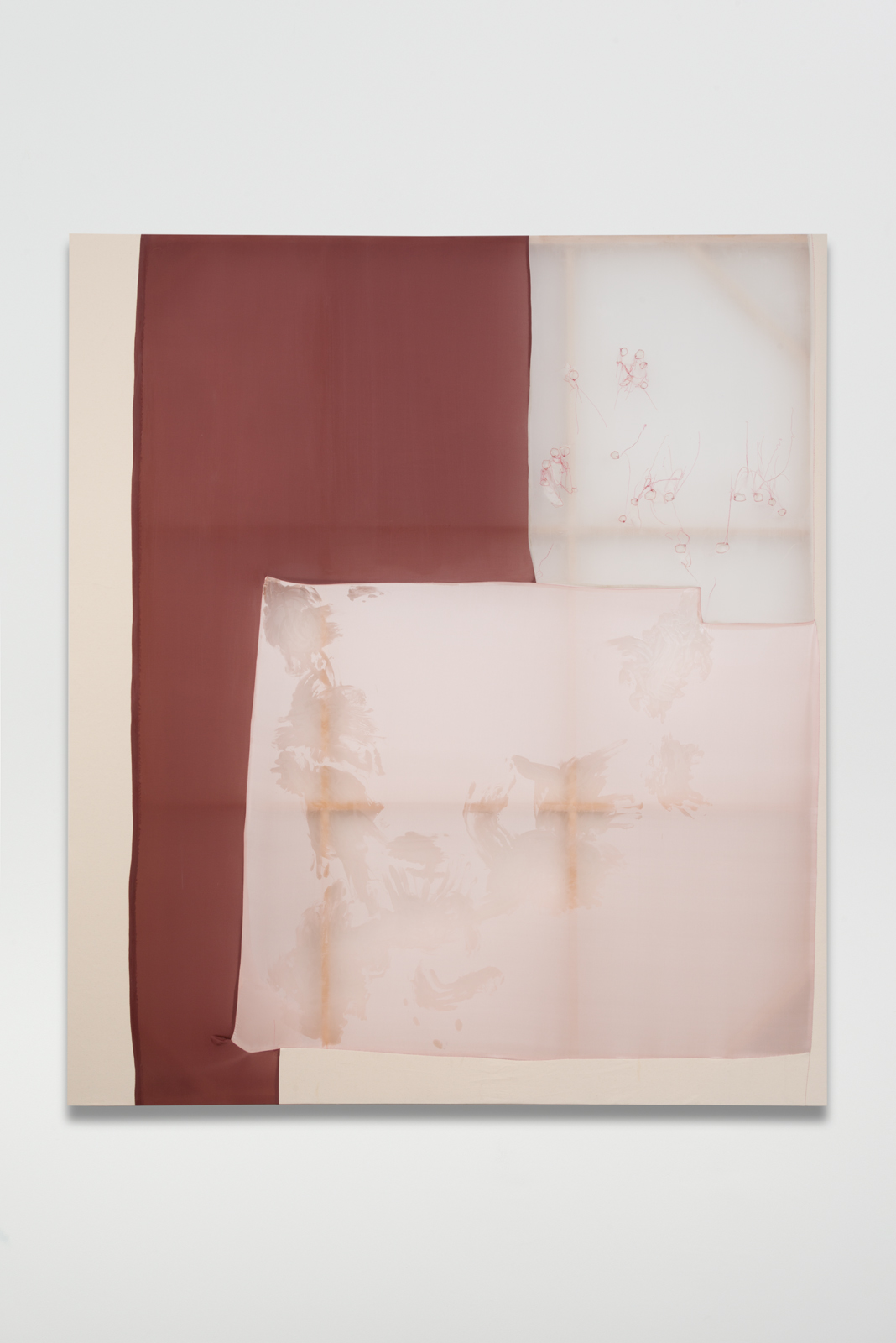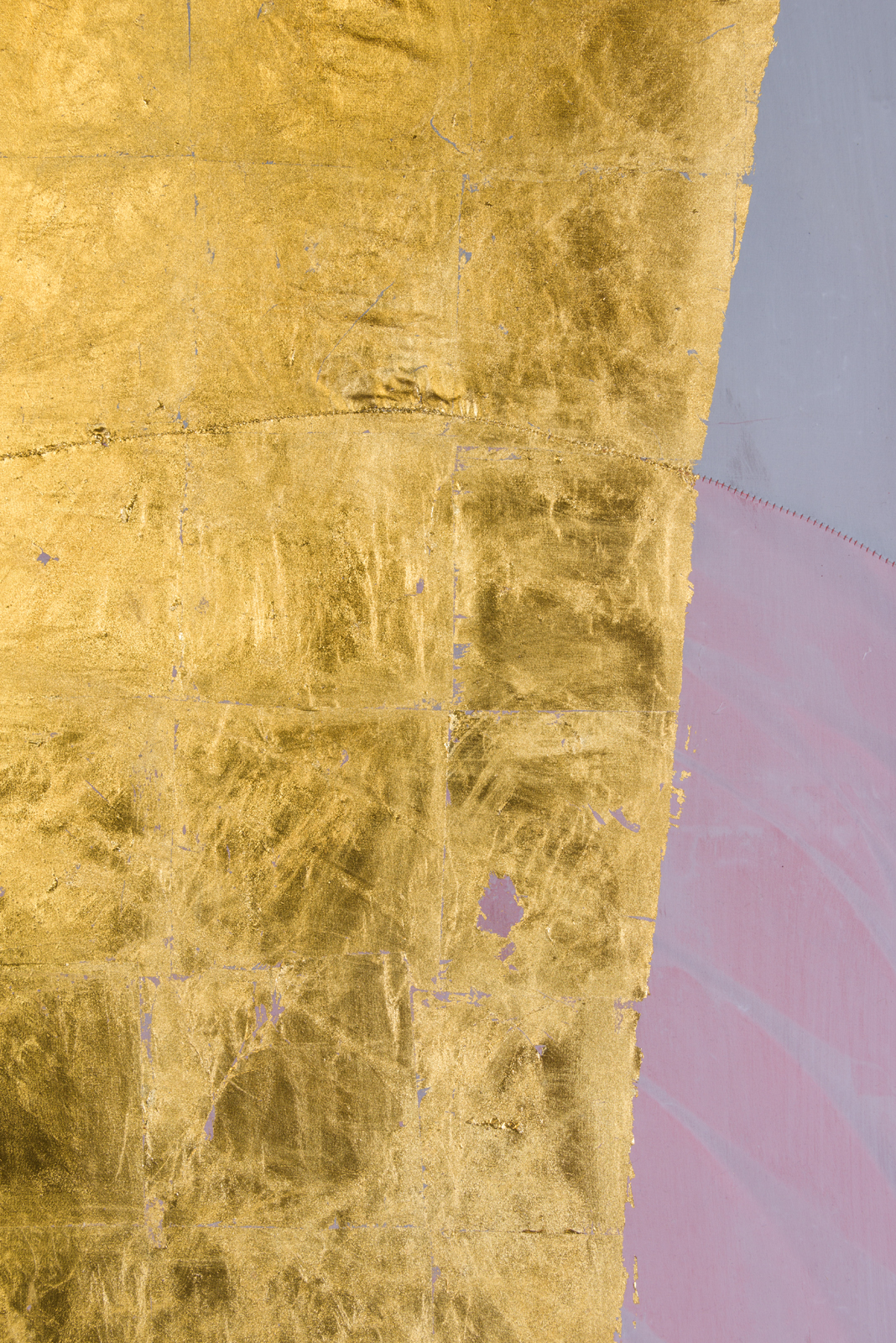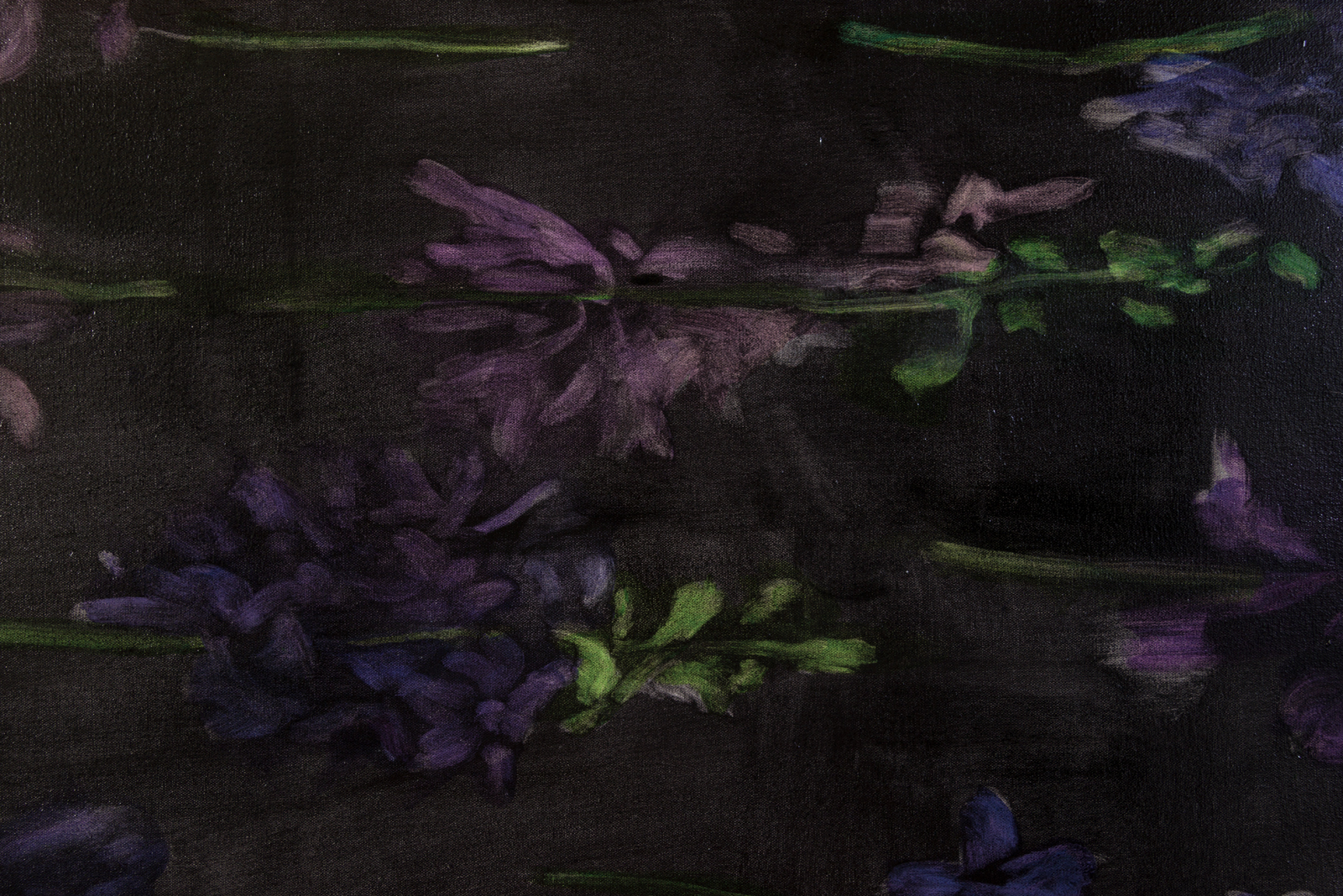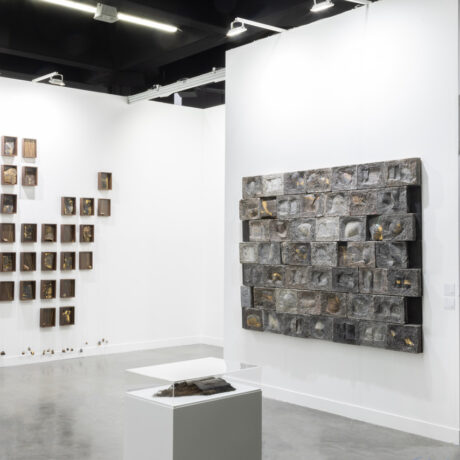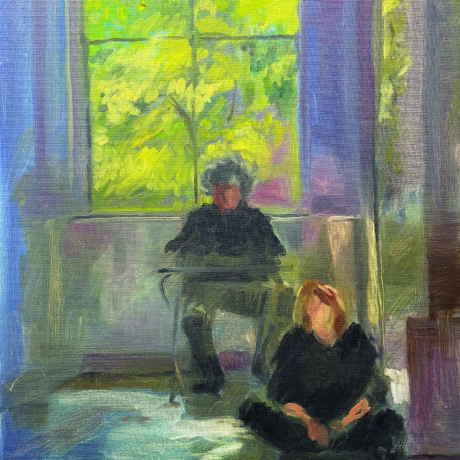
Can you tell me a bit about Visions from the Personal Growth Laboratory?
A large portion of my research and the source of this body of work comes from my interest in psychology. Particularly the work of a couple (and how this work had developed through their predecessors) who were associated with the Human Potential movement, John and Joyce Weir, who developed a “percept language”— a way of rephrasing language to take ownership over each individual experience with the awareness that all meaning is made up. The point of this language is to restructure the brain in order to create fluidity in the way we fashion images of ourselves and face our nothingness through curiosity and play. For me, these works are a visual language that aligns and explores the potential of this thinking. This is why the element of collage is so important to me along with improvisation.
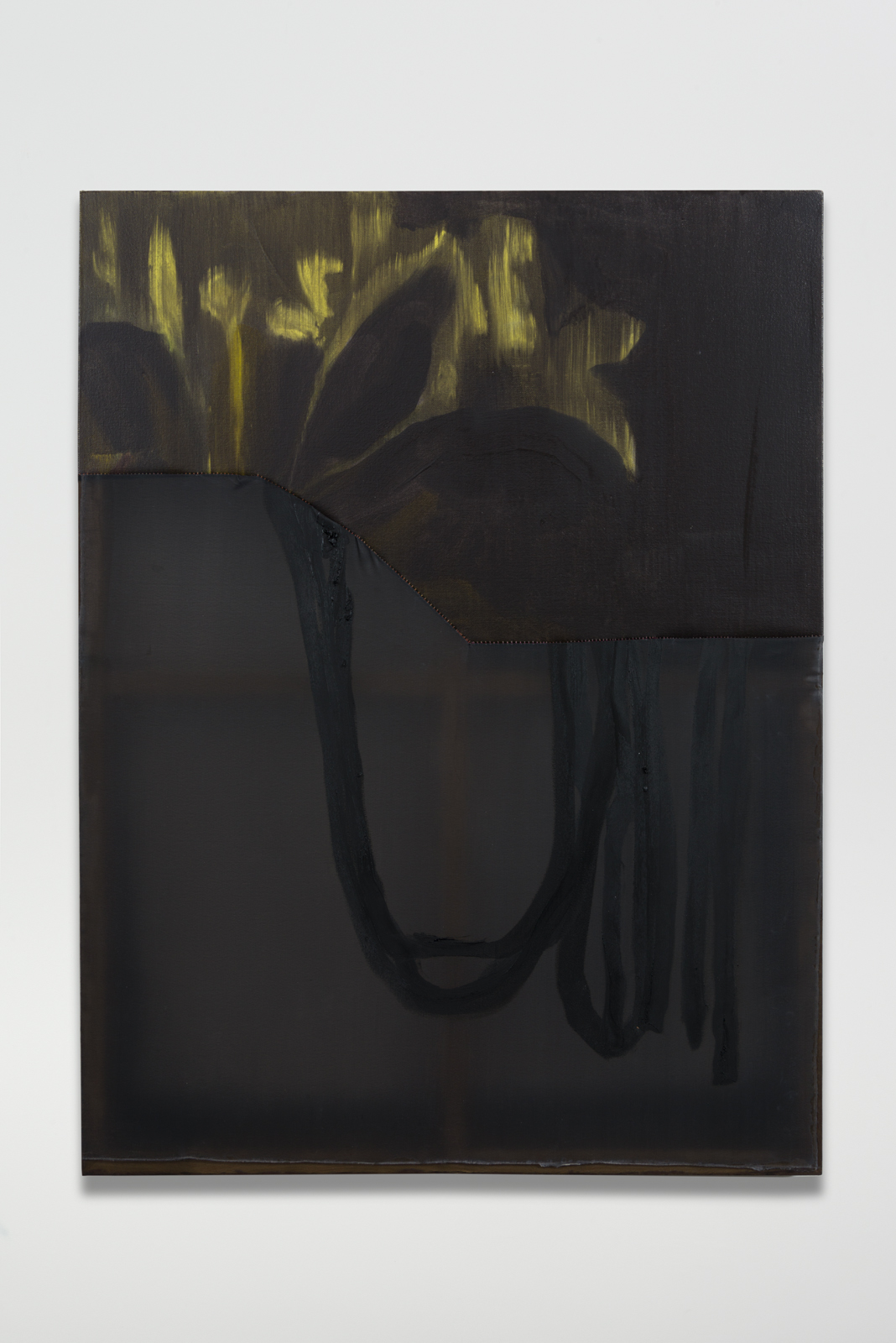
Are you typically so influenced by psychology and what effect would you say this has had on your practice?
Well, to be precise, my research of Percept Language has been done by attending “labs” conducted by Jake and Hannah Eagle, who are current practitioners of the Weir’s work. So my research is based on their interpretation and development of this philosophy and practice. This is my third year attending one of these labs, and the research has increasingly become embodied in my own work. This said I’m finding myself in a chicken/egg situation because I have been steeped in the world of psychology throughout my upbringing. My Mother, who is a psychiatric nurse practitioner, has always been curious about different approaches to understanding the brain and different approaches to structuring our experiences. She, Jake and Hannah are long time friends and were colleagues before I was born and then later attended their very first lab around the time when I was starting art school. So tracing the effect of psychology on my practice could become an intricate conversation, but to simplify, I would say that I have developed a deep curiosity for how individuals can create and shift their own truths and realities and the impossibility of truly knowing someone else’s reality, despite communication and empathy. The friction created in this impossibility can lead to conflict, but also such potential for experiencing the mystery of life. Percept, as a philosophy and practice, acknowledges difference and creates opportunities for embracing and experiencing our aloneness with intention. We could talk about this in terms of the void or the sublime.
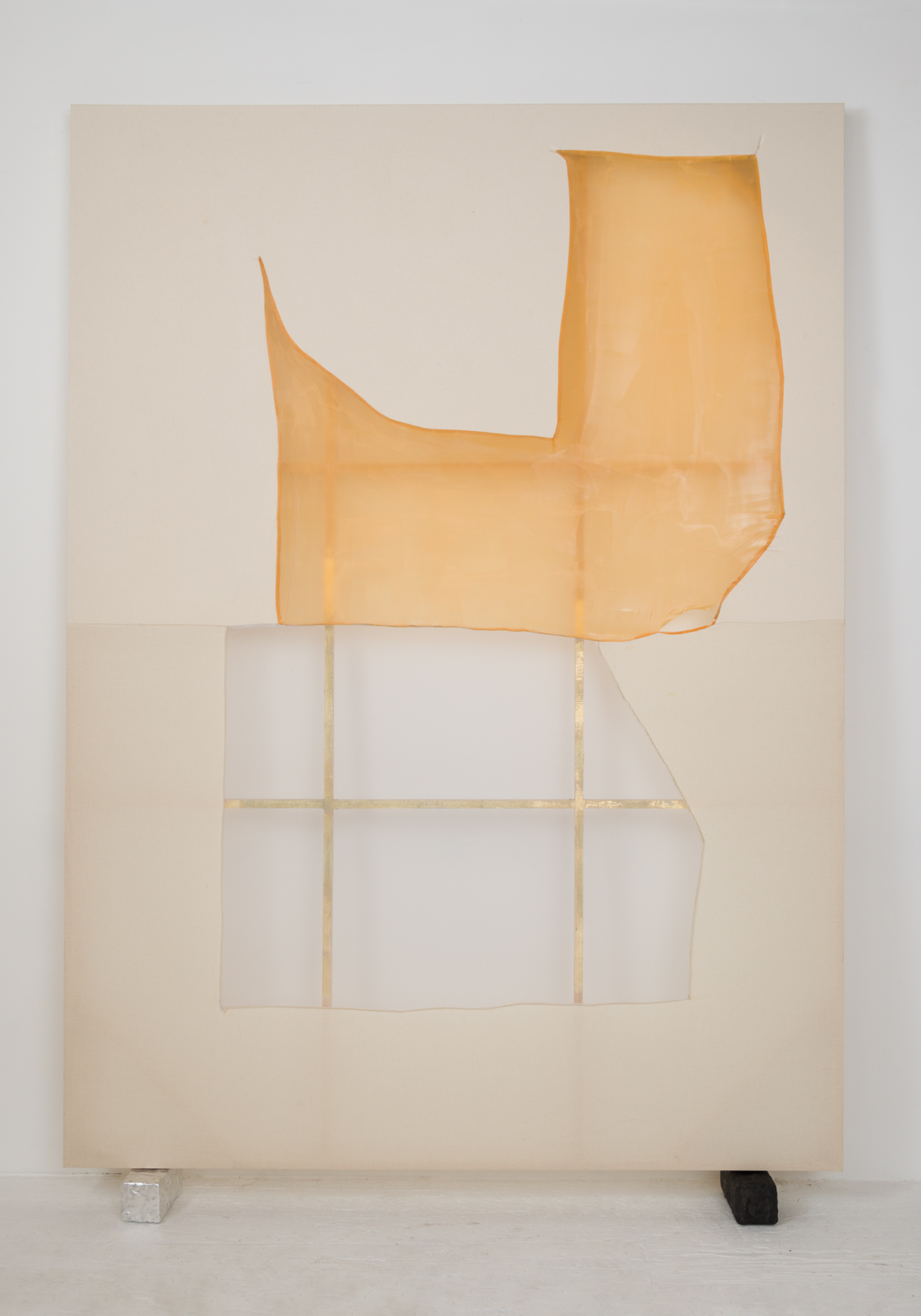
How has your work with language come together with your process here? Did you reach quite a structured idea of how you wanted to work with the theories you studied before beginning the pieces or has it fed through quite naturally as you’ve created the paintings?
I think these ideas have been a part of the work for a while now, but this is the first time I am acknowledging this research within the work directly, so the process has been organic and more about recognizing how I have influenced myself with this research. I keep repeating a quote from the movie I Heart Huckabees in my head: “How am I not myself?… How am I not myself?”
Percept language itself is a tool and a method for realizing and remembering that we are each making up meaning about whatever happens moment to moment and then, creating the freedom to reevaluate and change this meaning. An example of rephrasing a sentence using Percept might be changing a sentence like: “This rain really disappoints me” to “I disappoint myself with this rain”. This subtle shift in language removes victimization and functions as a reminder of the temporary nature of each passing moment, opening up the potential to shift perspective. I find this language to be a reminder that our ego and our identity does not have to have a fixed and rigid definition. John and Joyce Weir labelled this research as Percept, but the Eagles have changed the name several times, in keeping with this approach to creating flexibility within identity. They have gone by the names Percept, Green Psychology, Reology, and are currently in the process of renaming themselves again. This approach is terrible for branding but congruent with the core of this philosophy. I’ve used the term Percept in relation to my own work because I appreciate the correlation to the visual and creating meaning through perception.
I see my own work, particularly this show at Lyles & King, as embodying this approach through my process and how I imagine the work might be read. I often employ transparency within the work as a reminder that surface is a construct. I identify with so many other artists who have used this approach but expand and deepen the potential of my practice by framing these paintings in relation to this philosophy. I think about surface in terms of seduction, acknowledging aspects of deception that can come with being seduced. Gold leafing has been a recurring element within the work, and I am captivated by its ability to do two things at once: adorn the surface and highlight imperfections. I seek out a duality within process. Another instance can be found within the finger paintings or “Nudes”, in which the gesture of the hand creates the image through shifting the opacity of the material but this gesture also evidences searching for image—groping and slipping into being.
Additionally, each painting is a whole comprised of parts and embodies a process of creating this through improvisation. Sometimes the process of collage becomes seamless as if all the decisions were made at once, but sometimes the are more clues—the process of piecing, cutting and re-stretching. One example within the show can be found in Split (You Do You) and Split (an Agreement) in which two previous paintings were cut and swapped halves. If they were a diptych I might have used the title Split (I like your story better).
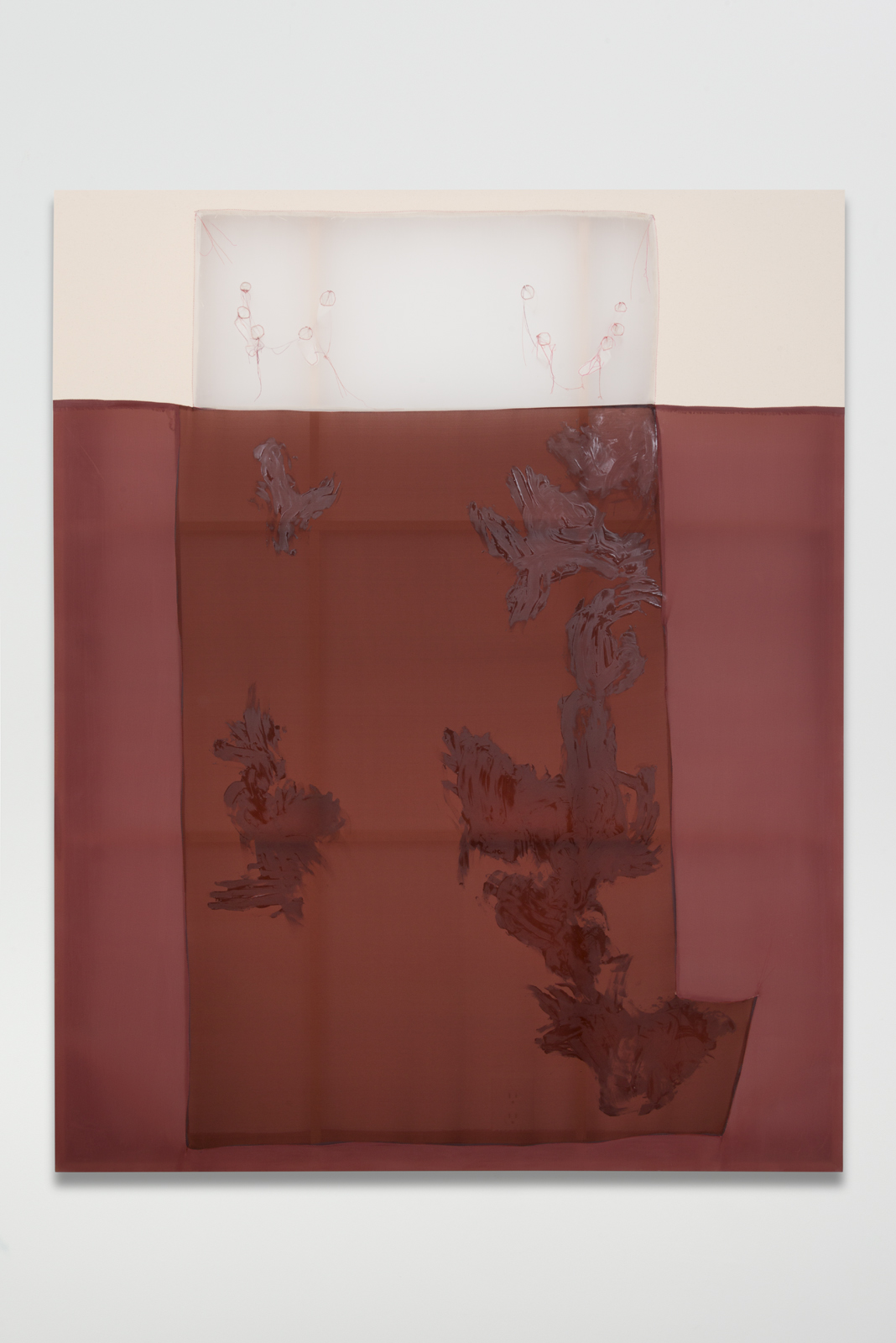
The paintings in this show are mostly abstract, but there are some clear flower forms in multiple works. Where did this imagery come from?
The boundary between abstraction and figuration has always been blurry for me and the lack of definition is exciting to me. The flower forms in these works are abstract. They are done from observation, but they are translations. As translations they are done through a process of subtraction (wiping away a black layer of paint with my hand) with minimal gesture, requiring the viewer to fill in the gaps. They also can be read within the context of a tradition of vanitas painting and a long history of representing the temporary nature of our existence.
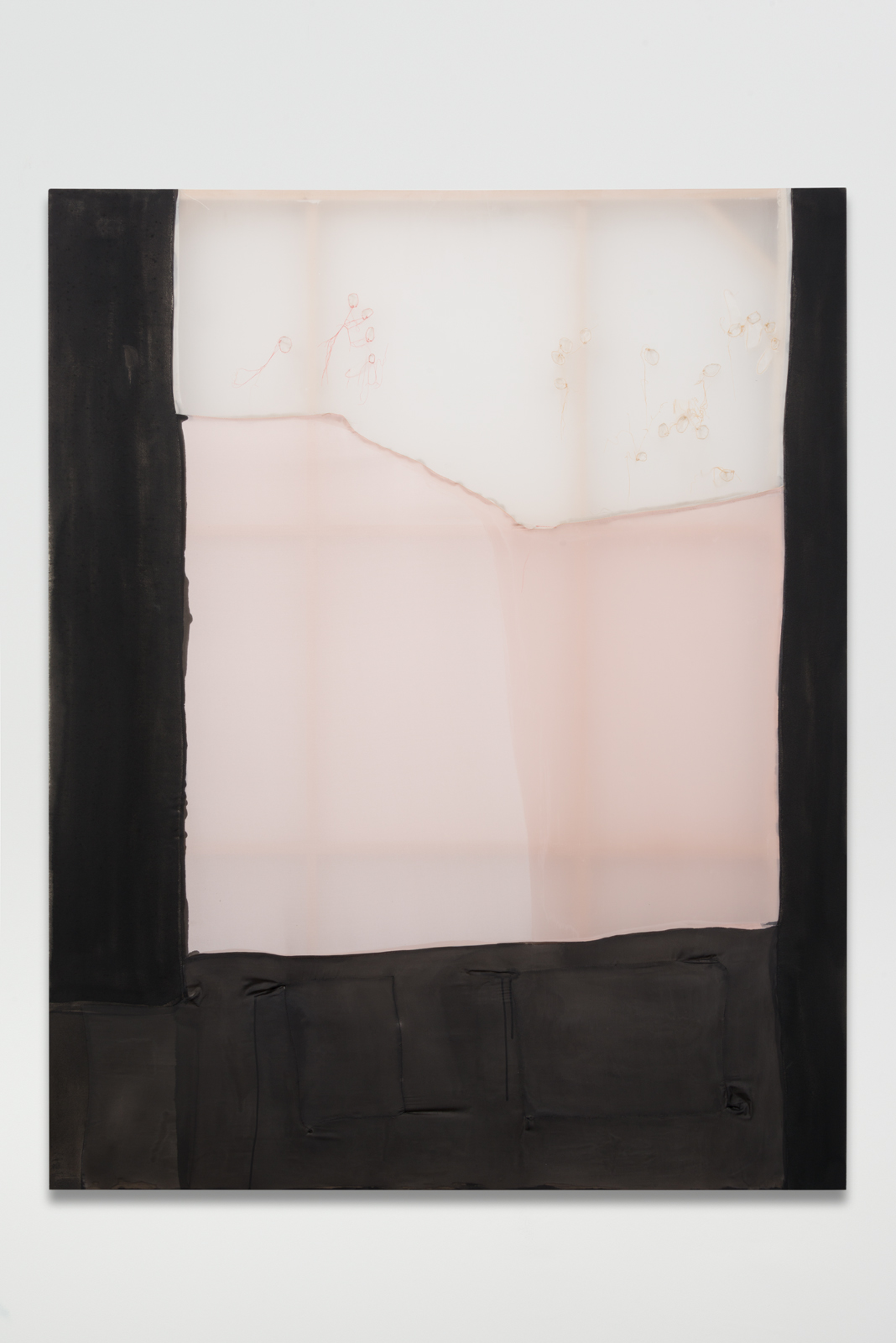
Can you explain a bit about the division between light and dark here? There is a mix of very delicate skin tones and much deeper blacks…
I think this relates back to how I seek out dualities and want to create room for “both” rather than “this” or “that”. I don’t see this duality as being one of “light” vs. “dark” or in the sense of good/bad. The clues might be found in how I’ve titled the works. The lighter ones, such as Nude (Sensing the Blind Path) and Nude (Slip into myself), have to do with a process of searching. I think about the light parts as shining a flashlight on a process of rephrasing, restructuring, redefining. These “Nudes” or ones with delicate skin tones certainly have a much more direct connection to the body and a congruence between psyche and body. The darker ones, titled Sanctuary (a Process) or Bed (Vision of a Final Form), which have more to do with death and the reference to vanitas painting and coming to terms with a finite existence in a way in which that unknown can be an expansive space for reflection on the present moment.
‘Visions from the Personal Growth Laboratory’ runs until 4 June at Lyles & King, London. lylesandking.com
